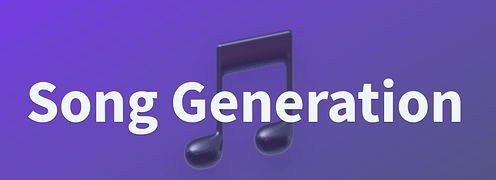If you’ve stumbled upon OpenAI Jukebox and found yourself wondering, “How does OpenAI Jukebox work?”, you're not alone. This AI music model isn't just another beat maker—it’s a cutting-edge generative system that can produce full-length songs with both vocals and instrumentals, simulating the style of specific artists and genres.
Unlike apps like Suno or Udio, which provide user-friendly interfaces, OpenAI Jukebox is entirely code-based and research-focused. But what makes it especially impressive is the underlying technology: it doesn’t just arrange samples—it actually learns musical structure from the ground up using advanced neural networks.
In this post, we’ll break down exactly how OpenAI Jukebox works, from data processing to tokenization and generation, in a way that’s digestible—even if you’re not a machine learning expert.

Explore: How to Use OpenAI Jukebox
How Does OpenAI Jukebox Work?
Let’s walk through the entire workflow of OpenAI Jukebox. Think of it like peeling back the layers of a digital composer’s brain. Here’s what happens:
1. Encoding Music with VQ-VAE
The first step in OpenAI Jukebox’s process is converting audio into a compressed format the model can understand. This is where VQ-VAE (Vector Quantized Variational Autoencoder) comes in.
VQ-VAE breaks down raw audio into discrete codes, a bit like translating music into a language of numbers.
It does this at three hierarchical levels, where each level represents different layers of musical information (from rhythm to melody to texture).
This encoding compresses music so the neural network can process it efficiently without losing too much detail.
Why this matters: Rather than working with massive .wav files directly, the AI reduces the complexity while preserving musical essence.
2. Training on Large-Scale Music Datasets
OpenAI Jukebox was trained on a dataset of over 1.2 million songs, with licensed and genre-labeled data. This includes a broad spectrum of genres—jazz, hip-hop, rock, pop, metal, etc.—and spans multiple decades.
Each track is paired with metadata:
Artist name
Genre
Lyrics (if applicable)
Tempo, structure, and other musical tags
This metadata helps the model understand context, enabling it to generate music in the style of Queen, Ella Fitzgerald, or even more obscure artists.
3. Using Autoregressive Transformers for Music Generation
Once the audio is encoded into tokens, OpenAI Jukebox uses a Transformer-based autoregressive model to generate music token-by-token—just like how GPT generates text word-by-word.
The model is trained to predict the next audio token based on previously generated ones, maintaining musical coherence.
It takes into account input lyrics, genre, and artist embeddings to condition the output.
Transformers are especially good at learning long-range dependencies, so they can model long musical phrases or recurring motifs.
The result is music that follows a logical structure: intros, verses, choruses, and even subtle dynamics.
4. Decoding and Reconstructing Raw Audio
After generating the tokens, OpenAI Jukebox uses the decoder part of VQ-VAE to turn these tokens back into raw audio.
This reconstruction can result in high-fidelity audio, but also has its challenges.
The vocal lines may sound robotic or smeared because audio generation is complex and full of nuance.
Still, it’s impressive how well the AI can mimic singing style, pitch, intonation, and rhythm, especially with lyrical input.
5. Conditioning with Lyrics and Style
One of the coolest aspects of OpenAI Jukebox is its ability to generate music based on custom lyrics.
When you input lyrics, the model learns to "sing" those lyrics in the style of the chosen artist and genre.
Example:
json{
"artist": "Elvis Presley",
"genre": "rock",
"lyrics": "Walking down the alley where dreams fade away..."}With this configuration, OpenAI Jukebox will attempt to create a rock-style song with Elvis-like vocal patterns singing your original lyrics.
Why Is OpenAI Jukebox So Computationally Heavy?
The major downside of OpenAI Jukebox is that it’s slow and resource-intensive.
Generating 30 seconds of music can take 6–12 hours on high-end GPUs like Tesla V100s or A100s.
This is because it involves autoregressive sampling, which requires token-by-token generation, not parallel batch processing.
As of 2025, there’s no real-time generation capability.
Still, if you’re okay with waiting, the quality is among the best in research-based music AI.
What Makes Jukebox Different from Other AI Music Models?
| Feature | OpenAI Jukebox | Suno | Udio | AIVA |
|---|---|---|---|---|
| Supports vocals | ? | ? | ? | ? |
| Code-based | ? | ? | ? | ? |
| Open-source | ? | ? | ? | ? |
| Lyric conditioning | ? | ? | ? | ? |
| Genre control | ? | ? | ? | ? |
| Real-time generation | ? | ? | ? | ? |
Real-World Applications of OpenAI Jukebox
Despite being a research project, OpenAI Jukebox has real-world use cases:
AI music experimentation
Test how lyrics and genres interact across different musical contexts.Voice cloning research
Analyze how neural networks can emulate famous vocal styles.Genre hybridization
Mix and match genres to create never-before-heard blends.Academic exploration
Used in universities and AI research labs to study generative audio.
Limitations and Ethical Considerations
Copyright concerns: While the model is trained on licensed data, generating in the "style of" real artists may still pose legal issues for commercial use.
Audio artifacts: The generated audio often includes distortion, especially in high frequencies or complex vocal lines.
No live interface: Users must use code, making it inaccessible to non-developers.
No updates since 2020: OpenAI has not released newer versions, focusing instead on other models like Sora and GPT-4.
Conclusion: Is OpenAI Jukebox Worth Using?
OpenAI Jukebox is a groundbreaking model that shows what’s possible when AI tackles music generation at the audio level. It’s not perfect. It’s not fast. It’s not even meant for casual users.
But for those who want to dive deep into how AI understands music, style, and vocals—it’s a treasure trove. Understanding how OpenAI Jukebox works reveals just how far generative audio has come, and hints at where it’s going next.
FAQs About How OpenAI Jukebox Works
Q1: What kind of music can Jukebox generate?
It can generate jazz, rock, hip-hop, electronic, classical, and more—with or without vocals.
Q2: Can I run OpenAI Jukebox on my laptop?
Only if your laptop has a powerful GPU like an RTX 3090. Otherwise, use cloud platforms like Google Colab Pro or Lambda Labs.
Q3: Is the model open source?
Yes. OpenAI released the full code, dataset interface, and pretrained weights.
Q4: Does OpenAI Jukebox understand chords or sheet music?
No. It doesn’t use symbolic representations. It works entirely on raw audio tokens.
Q5: Can I fine-tune Jukebox on my own music?
In theory, yes—but it requires advanced machine learning knowledge and extensive computing power.
Learn more about AI MUSIC







